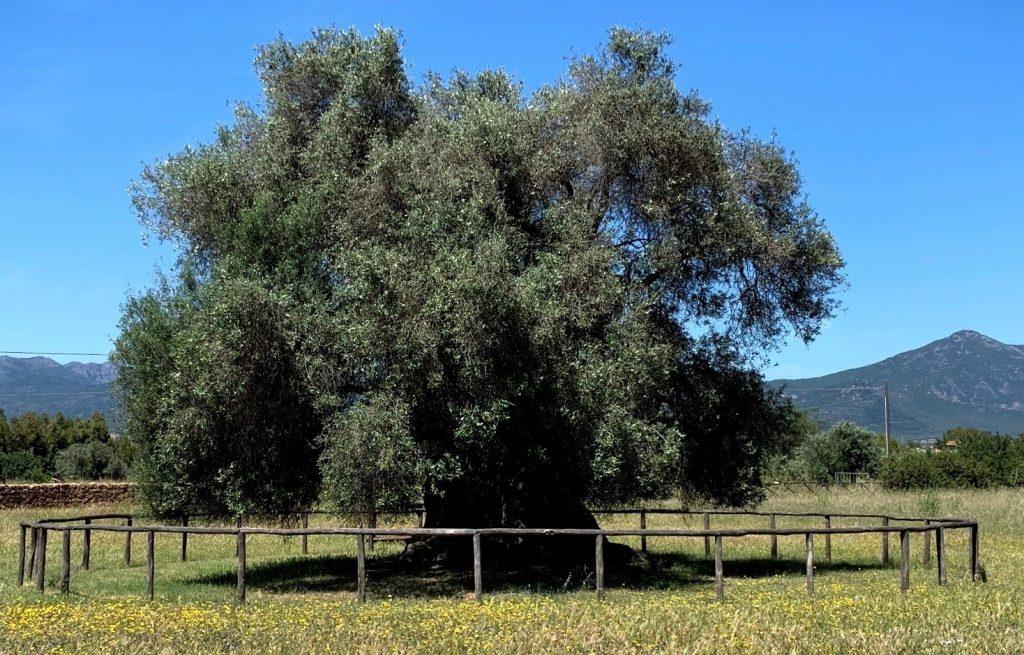Climate change scenarios
The latest FAO estimates project that by 2050, the world population will reach nine billion, putting an even greater strain on natural resources, and the impact of climate change on this scenario is vital.
The Mediterranean basin is expected to undergo significant changes in temperature and rainfall. The most extreme scenarios predict an increase of about 5 °C at the end of the 21st century if mitigation targets are not met.
Several studies show that significant warming has already occurred in the last 40 years and annual temperatures are now about 1.5 °C higher than in the pre-industrial period (1880–1899) and well above current global warming trends (up 1.1 °C).
For the Mediterranean area, future climate forecasts are characterised by reports of thermal and water stress on plants, due to low rainfall, excessive heat and strong solar radiation. This is compounded by the increased frequency of extreme weather events, such as heat waves, hail, floods and forest fires, and the possibility of tropicalisation of the intermediate seasons.
Olive trees and climate change
Of all the crops, olive trees can be considered one of the best bio-indicators of climate change in the Mediterranean basin. Indeed, the strong climatic variability currently observed between harvests and seasons significantly affects the phenology and productivity of this crop.
Today, olive groves face new challenges and threats, due to ongoing climate change. Increased warming and droughts, and an upsurge in the frequency of occurrence of extreme weather events, such as heat waves, heavy rainfall and cold snaps, are some of the problems that olive growers are facing and will have to face in the coming decades.
The effects on crops
The first effect of climate change is drought: in Italy, large areas of several southern regions such as Apulia, Sicily and Calabria are already affected by this problem.
Although the olive tree is a drought-tolerant species, forecasts for 2050 indicate a greater demand for net irrigation, especially in the eastern and southern areas of the Mediterranean, strongly characterised by aridity.
In traditional olive groves, water is an important environmental limiting factor for production. Controlling transpiration and reducing the rate of photosynthesis under drought conditions in olive trees limits production during long dry spells. In central and southern Italy, a reduction in olive production has been assumed (a drop of 34.1% ± 19.1% in average values up to 2050) and the reduction would seem to be greater if the forecast period is extended to 2070.
The impact on the biology of the species is far from negligible. The changes alter the growth pattern of olive trees and encourage the re-emergence of secondary pests and the spread of alien pathogens.
In general, the Mediterranean climate does not favour the development of epidemics for most olive tree diseases caused by fungal and bacterial pathogens, but with the shift of olive cultivation towards areas characterised by higher altitude and latitude, the spatial distribution of pathogens and the emergence of new diseases will also change.
Reacting by adapting current cultivation techniques in anticipation of environmental changes and developing strategies to counter and/or mitigate the effects of climate change is therefore of paramount importance.
Scenarios, solutions and opportunities
Combating the effects of climate change involves various initiatives at different levels.
First of all, it is necessary to adopt mitigation and adaptation strategies aimed at increasing CO2 storage, efficient use of water resources, and adaptation of cultivation techniques in relation to the new climatic context applicable to the Italian olive industry.
Varietal choice is an essential element in the design of new planting programmes, and the process of selecting resilient varieties is a priority research objective in the context of the National Olive Plan.
Varietal selection in olives and obtaining new varieties through cross-breeding that are resilient to climate change is one of Italy’s major strengths due to the enormous genetic variability existing in our territory.
While obtaining new varieties through cross-breeding is a goal that can be achieved in the long term, varietal selection can be undertaken in the short to medium term.
CREA-OFA in Rende, as part of several projects financed by the National Olive Oil Plan, is selecting olive varietals that best respond to the critical issues currently affecting Italian olive growing due to the impact of climate change.
Furthermore, the development of predictive models on future climate trends is of great interest, as the information can be used for the development of appropriate short- and long-term adaptation strategies to minimise the impacts of climate change on the environment, human activities, pest and pathogen control, olive grove productivity, and fruit and oil quality.
Research will have to provide guidance on how to adapt to climate change and mitigate negative impacts, bearing in mind that future land-use demands will emerge that may endanger traditional olive groves due to poor financial return. It will be important to manage olive groves taking into account optimal timing for certain agricultural operations, cultivar selection and the efficient use of water and resources.
Finally, it is important to assess the opportunities offered by climate change: traditional olive cultivation finds its optimal growing area between the 30th and 45th parallels.
This latitudinal range suggests that climatic conditions are a key factor for olive cultivation and its development cycle. Globally, unprecedented changes in the olive tree’s cultivation range across the Mediterranean basin may occur in the coming decades, progressively shifting its cultivation towards areas characterised by higher altitude and latitude.
In the 2000s, climatically usable areas for olive cultivation accounted for about 39% of the Mediterranean area and could reach about 50% by 2050.
In the near future, in response to climatic conditions, the olive tree will tend to expand more and more northwards, reaching the northernmost latitudes around the end of the century (2100). In particular, this new olive cultivation will affect pre-Apennine and Cisalpine foothills, new flat and hilly areas as is happening, for example, in the provinces of Pordenone and Treviso.
This is a new type of olive growing, free from the specific characteristics of traditional cultivation, such as the territorial link of the variety and the obsolescence of the plantations. This new olive cultivation can be seen as a new opportunity, as the high latitude and altitude enhance the organoleptic characteristics of the oil, contributing to an extraordinary high-quality product.


